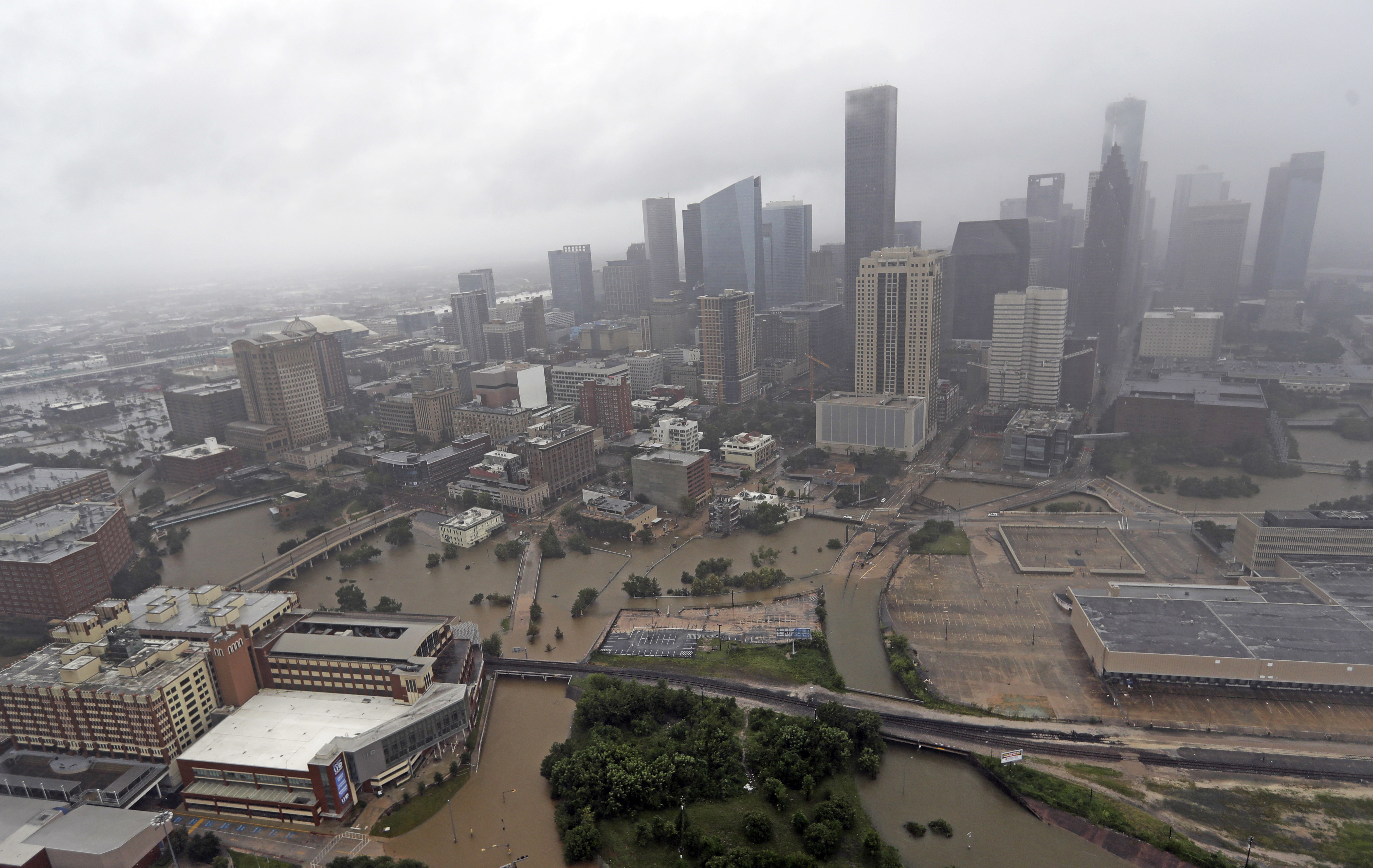
A recently published study found that Houston is the fastest-sinking major city in the United States, with more than 40% of its land area subsiding faster than 5 millimeters per year.
The study, published Thursday in the journalNature Cities, used satellite data from a period of six years to measure how fast the 20 most populous cities in the U.S. are sinking. Researchers also studied the impact that subsidence has on buildings and infrastructure.
Leonard Ohenhen, a postdoctoral researcher at Columbia University's Lamont-Doherty Earth Observatory, was the lead author of the study and said the satellite data provided very detailed measurements — down to segments measuring several meters.
"We compared images from 2015 up to 2021 using hundreds of images across the different cities, and that gave us an estimate of the rate of land motion during that period," Ohenhen said. "And not just for the entire city, but this data set [was] 28 meters resolution. So, for every 28-meter pixel, we know how the ground is moving at each of the spots."
The study found that in Houston, 42% of the area was sinking about one-fifth inch per year, with 12% sinking at more than double that rate. Fort Worth and Dallas were found to be sinking at rates slightly lower than Houston.
RELATED: Katy, Spring, The Woodlands sinking at substantial rate, expert says
Ohenhen said Houston has been known to be sinking for quite a while due to both water and oil extraction.
"For Houston, it is subsiding due to groundwater extraction. I think there's also oil and gas extraction in a lot of places in Houston as well," he said. "One of the reasons why this is interesting is because if you have an extended period of withdrawal from the ground ... it does not stop when you stop the extraction."
Subsidence is caused by the settling of the ground into the voids left behind after water or oil is removed, Ohenhen said. He drew comparisons to a soaked sponge.
"Think of it like a sponge that has water in it," he said. "If you have a sponge with water and you put something on top, say a water bottle, it would be difficult in some instances for the sponge to easily compact when it has that volume of water in it. ... It remains stable, so to speak, but if you expel that water, you would see it becomes easily compressible because there are spaces that the material can easily settle into."
RELATED: Sinking land combined with sea-level rise especially problematic along Gulf Coast, study finds
When a land area subsides, it can make the region more prone to flooding, and Ohenhen said previous research has suggested that subsidence exacerbated the flooding seen during Hurricane Harvey in 2017.
"Subsidence lowers the ground surface, allowing water to collect within a specific region of the city," he said. "You often have drainage which will allow water to flow from one direction to the other. When you change that, you basically stop the water from moving through the pathway it would normally take, and it goes into other areas [and] allows water to remain in an area for an extended period of time."
The perpetual shifting of the ground can also lead to damaged buildings and uneven roads, Ohenhen said. While the simplest solution would be to stop extracting water and oil from the ground to prevent the further acceleration of subsidence, Ohenhen said that is not always feasible.
"If you stop oil and gas extraction or water extraction, then where do people get their water from? Where do people get the resources needed to develop the economy?” he said. "One option is building levees or protection structures, or raising the ground elevation above the threshold of flooding. In other places, it could be enforcing building codes so that buildings that are coming up or existing buildings can be reinforced."
Copyright 2025 Houston Public Media News 88.7

